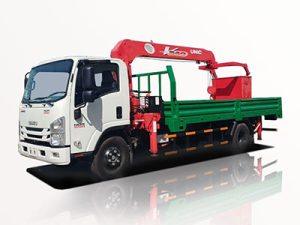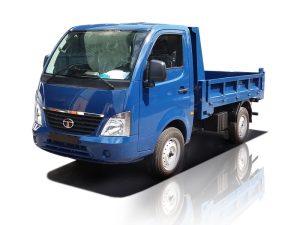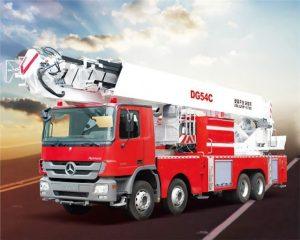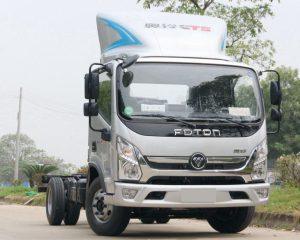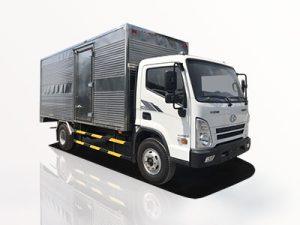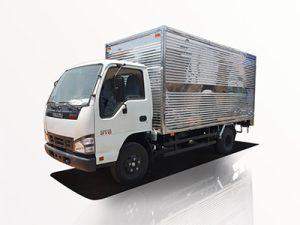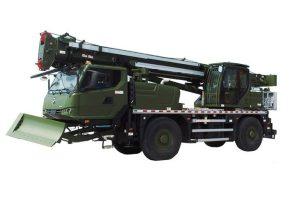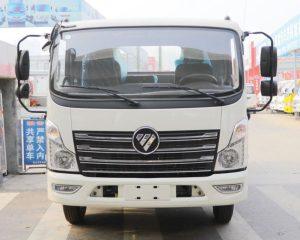Monday to Saturday - 8:00 -17:30
What is a Quint Truck? Understanding Its Functionality and Benefits
When it comes to firefighting and rescue operations, equipment plays a crucial role in ensuring safety and efficiency. One of the most critical pieces of equipment in this domain is the quint truck. In this comprehensive article, we will delve deep into what a quint truck is, its features, different types, advantages, and practical applications. By the end, you will have a thorough understanding of this essential firefighting vehicle and why it is integral to emergency response teams.
Table of Contents
- What is a Quint Truck?
- Key Features of a Quint Truck
- Types of Quint Trucks
- Benefits of Using a Quint Truck
- Operational Uses of Quint Trucks
- Quint Trucks vs. Traditional Fire Engines
- Maintenance and Safety Tips for Quint Trucks
- Common Questions about Quint Truck
What is a Quint Truck?
A quint truck, often simply referred to as a “quint,” is a type of fire apparatus that combines the functions of a pumper and an aerial device. The term “quint” itself derives from the five essential functions it performs: it can pump water, carry hoses, carry firefighting personnel, operate an aerial ladder or platform, and store water.
Quint trucks are crucial for urban firefighting, allowing rapid response to incidents where aerial access is necessary. They are designed for versatility and efficiency, making them a valuable asset for many fire departments.
Key Features of a Quint Truck
1. Aerial Ladder or Platform
One of the defining features of a quint truck is its aerial device, which can either be a ladder or platform. These can reach impressive heights, allowing firefighters to combat blazes from above and rescue individuals in high-rise buildings.
2. Pumping Capabilities
Quint trucks integrate powerful pumps capable of delivering water at high volumes and pressures, making them effective for direct firefighting. Most quints use a centrifugal pump system, which is standard in firefighting equipment.
3. Water Tank
Quint trucks typically come with a water tank, which can hold a substantial amount of water. This allows firefighters to start tackling a fire even before the arrival of additional support units.
4. Hose Storage
These trucks have organized compartments for storing hoses. They commonly carry a variety of hose sizes for different firefighting scenarios.
5. Personnel Capacity
The design of a quint truck accommodates a crew of firefighters who can swiftly deploy to the scene of an emergency. Typically, they can carry anywhere from 4 to 6 personnel.
6. Advanced Technology
Modern quint trucks are often equipped with technology like thermal imaging cameras, GPS systems, and communication devices. These tools enhance operational efficiency and coordination during emergencies.
Types of Quint Trucks
Quint trucks come in various designs and configurations to meet different firefighting needs. Here are the most common types:
1. Aerial Ladder Quint
This type is equipped with a ladder that can extend vertically to reach high places. It is ideal for urban firefighting and is effective for rescues from multi-story buildings.
2. Aerial Platform Quint
Instead of a traditional ladder, this type has a platform at the end that can hold more firefighters and equipment. It provides a stable working area for firefighting operations in challenging environments.
3. Mid-Mount Quint
Mid-mount quints have the aerial device positioned in the middle of the truck rather than atop the front. This design allows for better maneuverability and access in tight urban environments.
4. Rear-Mount Quint
In contrast, rear-mount quints have the aerial device mounted towards the back. This configuration offers superior stability and reach in a variety of scenarios.
Benefits of Using a Quint Truck
Quint trucks offer numerous advantages that enhance firefighting capabilities:
1. Versatility
The most significant benefit of quint trucks is their multifunctionality. They serve as both a driving force in firefighting and a rescue platform, allowing for faster responses to different situations.
2. Cost-Effectiveness
Due to their ability to combine several vehicles’ functions, quint trucks can reduce the number of required fire apparatus, leading to significant savings in maintenance, fuel, and staffing.
3. Space Efficiency
With their integrated capabilities, quint trucks are beneficial for fire departments with limited space. Instead of parking a pumper and an aerial truck separately, a single quint can satisfy both needs.
4. Enhanced Response Times
Having a quint truck allows firefighters to quickly tackle incidents without waiting for additional equipment to arrive, which can be critical in emergencies.
Operational Uses of Quint Trucks
Quint trucks are employed in various real-world scenarios, including:
1. High-Rise Fires
The inherent design of quint trucks, especially those with aerial ladders or platforms, makes them ideal for combating fires in tall buildings.
2. Rescue Operations
Quints are crucial during rescue missions, where firefighters must evacuate individuals trapped in difficult-to-reach locations.
3. Fire Suppression in Crowded Areas
In densely populated environments, the compact design of a quint allows firefighters to reach and suppress fires where larger trucks cannot maneuver.
4. Hazardous Material Incidents
Quint trucks can also be utilized in hazardous material incidents due to their built-in pumping capabilities, allowing for immediate containment and management.
Quint Trucks vs. Traditional Fire Engines
While quint trucks provide unique benefits, it’s important to distinguish them from traditional fire engines. Below is a comparative analysis:
| Feature | Quint Truck | Traditional Fire Engine |
|---|---|---|
| Functionality | Combines pumper and aerial capabilities | Primarily focused on pumping water |
| Equipment Storage | Houses hoses, ladders, and personnel | Store hoses and pumps only |
| Response Time | Optimal for varied scenarios & rapid action | Effective but limited in scope |
| Cost | Often more cost-effective in total operations | Higher operational costs due to multiple vehicles needed |
| Space Requirements | More compact and space-efficient | Requires additional apparatus for full effectiveness |
Maintenance and Safety Tips for Quint Trucks
Maintaining a quint truck is critical for ensuring operational efficiency and safety. Here are some essential tips:
1. Regular Inspections
Conduct regular inspections to check the integrity of the ladder/platform, pump, hoses, and other crucial components.
2. Clean the Equipment
Regularly clean hoses, tanks, and the external surfaces of the truck to prevent corrosion and functional failure.
3. Lubricate Moving Parts
Ensure that all moving parts, especially the ladder mechanisms, are well-lubricated to prevent wear and tear.
4. Train Personnel
Ensure all personnel are adequately trained in operating the quint truck and understanding its features, enhancing both safety and efficiency.
5. Document Maintenance
Keep detailed records of all maintenance activities and inspections to track usage and performance over time.
Common Questions about Quint Truck
1. What makes a quint truck different from a fire engine?
A quint truck serves multiple functions—pumper and aerial device—while traditional fire engines focus solely on water pumping and firefighting without aerial capabilities.
2. How tall can a quint truck’s aerial ladder reach?
The height of a quint truck’s aerial ladder can vary significantly, typically ranging from 75 to 100 feet, depending on the model and specifications.
3. Are quint trucks suitable for rural environments?
While primarily designed for urban settings, quint trucks can be effectively used in rural areas if needed, although traditional fire engines might be more maneuverable in certain environments.
4. What type of training is required to operate a quint truck?
Operators must undergo specialized training covering various skills, including driving the truck, operating the aerial device, and general firefighting techniques.
5. How often should maintenance be performed on a quint truck?
Maintenance checks should ideally be conducted monthly or more frequently based on usage and local regulations to ensure the vehicle remains operationally safe and efficient.


